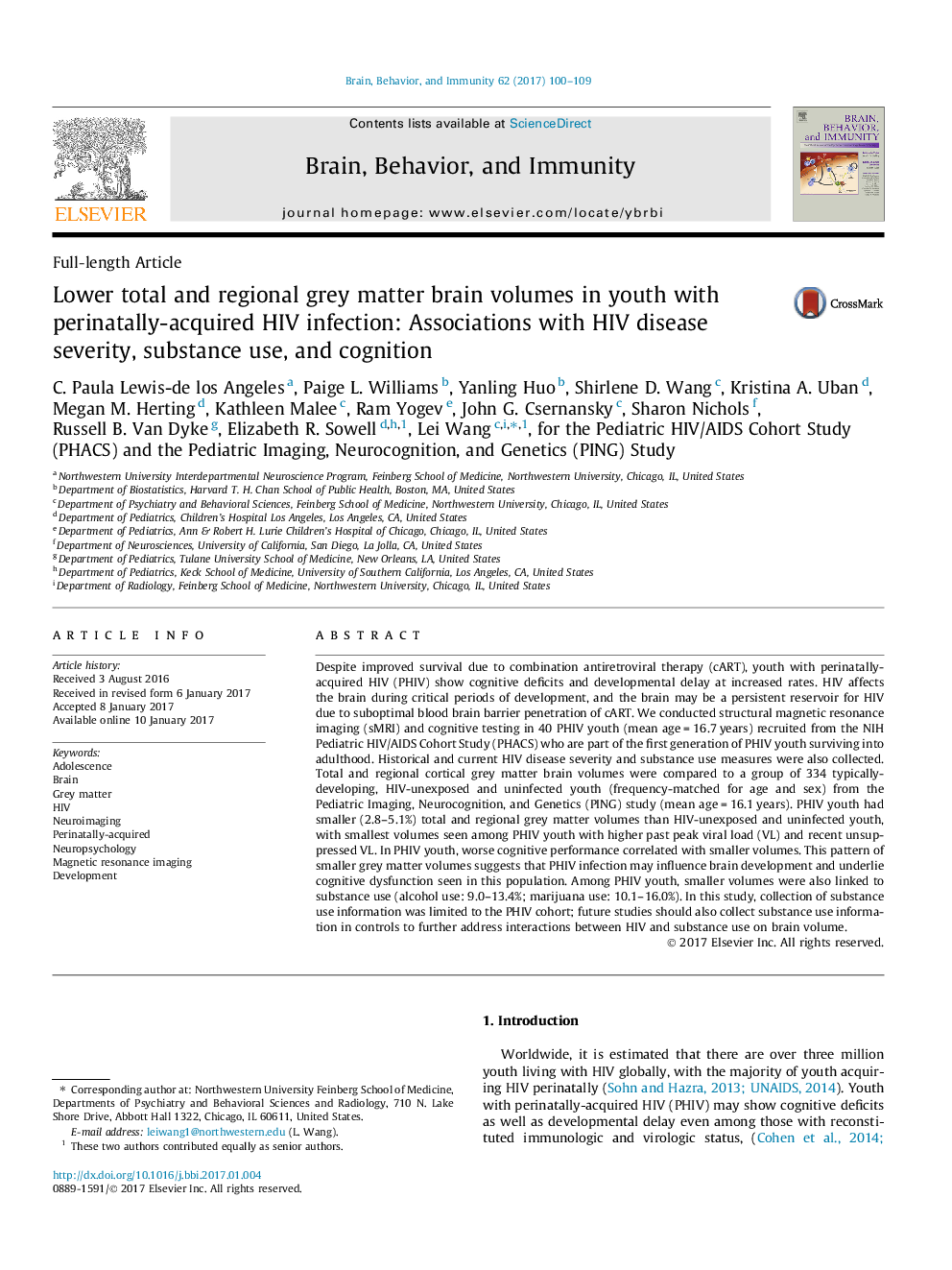| Article ID | Journal | Published Year | Pages | File Type |
|---|---|---|---|---|
| 5040785 | Brain, Behavior, and Immunity | 2017 | 10 Pages |
â¢Youth with PHIV have smaller grey matter volumes compared to HIV-unexposed youth.â¢In PHIV youth, worse HIV disease severity correlated with smaller brain volumes.â¢In PHIV youth, alcohol and marijuana use were associated with smaller brain volumes.â¢In PHIV youth, reduction in brain volumes was associated with poorer cognitive performance.
Despite improved survival due to combination antiretroviral therapy (cART), youth with perinatally-acquired HIV (PHIV) show cognitive deficits and developmental delay at increased rates. HIV affects the brain during critical periods of development, and the brain may be a persistent reservoir for HIV due to suboptimal blood brain barrier penetration of cART. We conducted structural magnetic resonance imaging (sMRI) and cognitive testing in 40 PHIV youth (mean age = 16.7 years) recruited from the NIH Pediatric HIV/AIDS Cohort Study (PHACS) who are part of the first generation of PHIV youth surviving into adulthood. Historical and current HIV disease severity and substance use measures were also collected. Total and regional cortical grey matter brain volumes were compared to a group of 334 typically-developing, HIV-unexposed and uninfected youth (frequency-matched for age and sex) from the Pediatric Imaging, Neurocognition, and Genetics (PING) study (mean age = 16.1 years). PHIV youth had smaller (2.8-5.1%) total and regional grey matter volumes than HIV-unexposed and uninfected youth, with smallest volumes seen among PHIV youth with higher past peak viral load (VL) and recent unsuppressed VL. In PHIV youth, worse cognitive performance correlated with smaller volumes. This pattern of smaller grey matter volumes suggests that PHIV infection may influence brain development and underlie cognitive dysfunction seen in this population. Among PHIV youth, smaller volumes were also linked to substance use (alcohol use: 9.0-13.4%; marijuana use: 10.1-16.0%). In this study, collection of substance use information was limited to the PHIV cohort; future studies should also collect substance use information in controls to further address interactions between HIV and substance use on brain volume.
